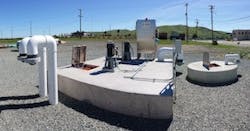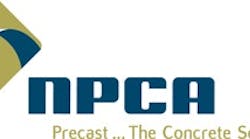The U.S. Army projects an image of strength, so it is no surprise that it expects the same level of strength from its building materials as it does from its soldiers.
At the Military Ocean Terminal, Concord—a naval shipping and receiving port located near Concord, Calif.—the Army needed to replace two existing pump stations that were unable to keep up with flow demands. The Army uses the port to ship, receive and store military equipment, and the stations were incapable of adequately pumping sewage from the base to the municipal sewer system.
The Army turned to Hal Hayes Construction, AMEC Foster Wheeler and Jensen Engineered Systems. The project was reviewed and overseen by the Army Corps of Engineers.
The new system consists of the E-109 and the Port of Chicago pump stations. The E-109 is the receiving point for wastewater and pumps to the PCH station, which also receives inflow from other sources. It then pumps the wastewater more than a mile to the municipal treatment plant.
During the design-build process, the layout was modified from submersible pumps to a dry pit to allow direct access to maintenance staff. Additionally, line-shaft pumps that allowed the motors to be aboveground were used to locate motors directly on top of the dry pit for easy maintenance, rather than submerged conditions. Jensen Engineered Systems provided net-positive suction head calculations, ensuring impeller submergence and cavitation-free pump cycles for both stations, and Jensen Precast manufactured the stations.
The system used large precast vaults due to extremely high groundwater. The project location for both stations was very close to the water, so high groundwater was a major concern for the customer. By using precast, the excavation could be quickly backfilled, lowering the dangers associated with the excavation in wet conditions. Additionally, Jensen was able to produce buoyancy calculations to ensure that flotation was not a concern. This led to a two-tier wall thickness system with thicker walls low and thinner ones higher up.



